A is for adult
According to AC Nielsen (MAT data, December 24, 2005), sales of adult soft drinks are up 21% to £99m in the take-home trade. Andrew Marsden, category director at Britvic, reports that there's been significant growth in consumption by over-25s as they take their teenage drinking habits into adulthood.
One of Britvic's great successes is J2O which, according to Marsden, is now the number-one premium packaged soft drink in pubs and is firmly established in the take-home market, too. "The phenomenal success of J2O reflects the growing consumer demand for premium adult soft drinks and its ability to offer a credible alternative to alcohol, helping publicans and retailers to improve sales and profits," says Marsden.
Another pub favourite, Britvic 55, was launched into take-home last summer. Flavours include apple, orange and raspberry & cranberry, and the drink comes in a stylish, embossed bottle to communicate its adult appeal.
B is for bottle
Bottles are outselling cans in many c-stores as consumers opt for their convenience and, in particular, their resealability. While 500ml is the standard in bottled carbonates, the size of water bottles just keeps on growing. Both Buxton and Aqua Pura have just launched 1ltr bottles.
Buxton's offering features a new 'easy open' thumb-up sports cap, which can be opened one-handed, while the bottle itself
is said to be the ideal shape for gripping while on the go. Meanwhile, Princes Soft Drinks' 1ltr Aqua Pura is aimed primarily at men because research has revealed that they want larger, sports cap bottles to consume while exercising.
C is for carbonates
Despite the trend in soft drinks away from fizzy drinks and towards still ones, carbonates is still a massive category. Cola is king and last year value sales of cola were up 2% to £1.18bn (AC Nielsen Scantrack, MAT December 24, 2005). However, the fruit carbonates sector took a hit, with sales dropping to £359m, while sales of non-fruit carbonates were down 4% to £206m.
D is for dairy
Dairy drinks have prospered thanks to their perceived health-giving qualities. According to AC Nielsen, sales through the take-home sector were up 26% last year and reached £377m. The Britvic soft drinks category report states that Yakult, Actimel and Müller Vitality lead the way.
For kids, Yazoo is a real favourite. It is low in fat and contains calcium and vitamin B. Again according to AC Nielsen, it is Britain's number-one milkshake. Sales were up 12% last year when 80 million bottles were sold. Yazoo is currently backed by a £3m advertising campaign and has joined with the Garfield II film for its latest promotion. Top prize is the chance to sponsor a tiger plus a trip to visit that tiger in India. The promotion is running on 200ml multipacks, 500ml and 1ltr bottles.
E is for energy
Lucozade and Red Bull still lead the way in energy drinks. Sales of Lucozade were up 25% last year to £253m and the brand has just received a boost courtesy of a new apple variant. Lucozade Energy brand manager Lucy Colman says: "Apple has been received extremely well, with 67% of consumers questioned agreeing that Lucozade Energy Apple is a great idea and 64% saying that they would probably or definitely buy it."
Meanwhile, Red Bull sold 274 million cans in 2005, worth nearly £90m. Of interest to retailers is the fact that a single can of Red Bull sold at the recommended retail price of £1.20 provides a profit on return of 42% (when bought at the standard cash and carry case price of £14).
Red Bull has recently launched a twin pack in a bid to encourage consumers to buy more. Red Bull head of customer marketing Imogen Pudduck comments: "We initially developed this pack in response to research by the Loughborough Sleep Research Centre which showed that two cans of Red Bull can help to eliminate driver fatigue. We also know that as many as 20% of shoppers don't buy more than one loose Red Bull can as it proves too awkward to carry, so the introduction of the new two-pack will help to combat this potential barrier to purchase.
"During trials it was found that the two-pack helped drive incremental sales with little cannibalisation of the single can. This means that shoppers can now easily trade up their purchase into larger packs and drive even more value into the category. We feel this pack offers a unique 'impulse multipack' as people are buying it chilled for immediate consumption."
F is for fortified
Consumers are demanding more from their soft drinks, including fortification with vitamins and minerals. Unilever's new AdeZ fits the bill as it is a blend of fruit juices and soya, fortified with vitamins and minerals that help maintain a strong body, as part of a healthy diet. Dairy-free and made with non-GM soya, it has vitamin C to help support our natural defences, contains as much calcium as a glass of milk and one-third fewer calories than most regular fruit juice drinks. It is low in sugar and fat and contains no preservatives. It comes in pineapple & passionfruit, mango & apricot and orange & peach varieties, in 1ltr cartons. A £12m launch campaign includes TV advertising and sampling.
G is for guzzle
As a nation we guzzled our way through 14 billion litres of soft drinks last year. According to the Britvic soft drinks category report, 10- to 15-year-olds drank the most, consuming 462 litres each. Next came 16- to 24-year-olds, who drank 367 litres each. The older we get, the fewer soft drinks we consume, with the over-65s drinking a meagre 99 litres each last year.
H is for health
Health and well-being are top of mind with most consumers as they seek out drinks that have a perceived benefit. Obviously, water is doing very well out of this trend and its benefits to our health should not be under-estimated. According to Water UK, drinking water regularly throughout the day helps us to stay healthy and feel good. It increases our ability to concentrate, boosts our resistance to infection and can even lessen our risk of developing serious long-term illness.
New research by Highland Spring reveals that consumers are aware of the importance of drinking water. Some 81% of those questioned said hot weather was the biggest driver for drinking more water, while
69% said they drank more after exercising. However, only 31% said that tiredness, an indicator of dehydration, prompted them to drink more.
I is for impulse
Soft drinks are one of the key impulse buy items in convenience stores, alongside confectionery and snacks. Basically, if a consumer sees a chilled, soft drink in a store they are, more often than not, tempted to buy. GlaxoSmithKline (GSK) has recognised this, which is why it is investing heavily
in a long-term independent retail strategy. The idea is to help retailers make the most
of the soft drinks opportunity in their stores.
It means that a bigger and better GSK salesforce now calls regularly on more stores; equipment such as single- and double-door coolers and dairy decks is more readily available; and more effective ranging advice is being delivered. This was first implemented last year and since then value sales of the company's brands in independents have increased by £13m.
This gives the company a 21% share of drink-now soft drinks sales in independents and recent sales data reveals that figure could increase to 23%.
J is for juice
Tropicana is king of juices in the UK, worth some £175m, and its growth is likely to continue as chilled juice sales look set to overtake ambient for the first time. PepsiCo, the company behind Tropicana, puts the growth of chilled juice down to three main reasons: the fact that consumers are more health conscious and chilled juices meet their needs; more consumers are consuming juice or a smoothie for breakfast; and they are trading up to premium lines.
K is for kids
Kids are the biggest consumers of soft drinks, so are vital to the category. However, kids drinks have had a tough time of late as their ingredients have been under the spotlight as part of the health debate. Headlines in the national media about how many teaspoons of sugar particular drinks contain have had parents looking for healthier options. But getting kids to drink plain water can be difficult, which is why flavoured waters are proving so popular. Buxton offers lemon wave and strawberry splash flavoured waters, available in packs of eight x 25cl bottles, while Britvic has Robinsons Fruit Shoot H2O, a sugar-free, naturally flavoured water. It comes in 300ml clear bottles in blackcurrant, orange and apple flavours.
Away from water, and PepsiCo has launched Tropicana Go!, which it describes as "the first ever mainstream juice drink for kids to contain no nasties whatsoever". What the drinks do contain is 70% juice and 30% water. There are two flavours: orange & pear and blackcurrant & apple.
L is for licensing
Calypso has hit upon a way of getting kids to drink more water by teaming up with Disney Consumer Products for its latest licensing deal. The result is a Finding Nemo pack of bottled water. The little orange fish features prominently on the 250ml bottles. Calypso sales and marketing director Richard Cooke explains: "Finding Nemo is a natural for this market and our aim is use the appeal of the Calypso and Disney brands to widen the choice and stimulate further growth in the category."
M is for marketing
A phenomenal amount of money is spent each year on marketing soft drinks, but according to Britvic director of brand marketing Richard Collins "new and innovative marketing campaigns are vital to stay ahead of the market".
According to analysts Mindshare, the top spender last year was Coca-Cola Enterprises, so no surprises there. However, the top advertising spend by brand was Actimel with backing of £13.2m. Coca-Cola came second with £9.7m-worth of support. In fact, dairy drinks was the biggest spending category in 2005, up 39% to £37.6m.
N is for no added sugar
They used to be called sugar-free drinks but today they are labelled 'no added sugar' and are the fruity drinks consumers can imbibe with a clear conscience. They include Tango Clear - a carbonate with no added sugar, aimed at 18- to 30-year-olds. Then there's the no added sugar version of Robinsons Fruit Spring. Says Britvic category director Andrew Marsden: "We are making Robinsons Fruit Spring no added sugar the focus of the brand in response to the increasing consumer demand for healthier products. The range is significantly increasing the penetration of low-calorie fruit drinks, driving growth in a category with huge potential and increasing sales and profits for our retail partners."
O is for out-of-stocks
According to HIM, out-of-stocks remain the single biggest reason for failed purchases in convenience stores, mentioned by 43% of consumers surveyed who had failed to make an intended purchase. It's a sorry state of affairs and one that needs to be addressed. Soft drinks are an impulse purchase but if they are not there, displayed in the chiller for the consumer to buy, there will be no sale and no profit.
P is for pomegranate
The pomegranate is being hailed as the next big juice sensation, thanks to its health benefits. Apparently, pomegranate juice contains exceptionally high levels of antioxidants, which are needed to protect our bodies against free radicals. Just one 250ml glass of Pomegreat is said to provide half an adult's recommended daily allowance (RDA) of vitamins A, C and E, plus it provides 100% RDA of folic acid as well as a substantial amount of potassium and niacin.
As a result of these health claims, sales of Pomegreat are riding high; indeed, supplier RJA Foods reports that it is selling more than one million litres a month. So successful is the brand that a six x 1ltr pack has recently been launched exclusively for the cash and carry/wholesale sectors. RJA Foods managing director Adam Pritchard comments: "Pomegreat fills a gap in the juice drink market because it is a refreshing and great tasting juice drink that also has all the right health attributes attached to it."
Q is for quench
It can sometimes be difficult to quench your thirst - no matter how much you drink, you're still thirsty. That's because you're dehydrated and although water often does the trick - helping refresh and rehydrate - apparently it's not ideal for quenching a raging thirst during exercise. And this is where sports drinks come in, as they have been designed to hydrate better than water. Drinks such as Lucozade Hydro Active help replace the essential salts and fluid lost in exercise. Hydro Active also contains selected energy-releasing B vitamins, vitamin E and 23% of the RDA of calcium - important for good health and those leading an active lifestyle.
R is for refreshing
Not the drinks, but the brands, as each year dozens of soft drinks are refreshed with new pack designs. One brand to get the treatment is Buxton, with new easy-grip bottles and fresh labels that depict the natural purity of the product. Buxton senior brand manager Jenny Bond explains: "We have redesigned Buxton to be more appealing to our consumers, maintaining the brand's heritage but in a more confident, modern and impactful way."
Elsewhere, Britvic's Pennine Spring has now gained natural mineral water accreditation and with it comes a major relaunch. New bottles and graphics have been introduced, backed by a major marketing spend.
S is for smoothies
Small but full of opportunity is how best to describe the smoothies market. According to AC Nielsen, smoothies is the smallest sub-category within soft drinks, but the fastest growing. Figures for last year value it at £79m in the take-home market, up 72% on 2004.
Brands to watch include Innocent and PJs. PJs is now owned by Britvic and was recently the subject of a relaunch. A 1ltr size has just been introduced but for c-stores the 250ml offering is probably best. Flavours include strawberries & bananas and peaches, bananas & passionfruits.
T is for 'try me free'
There's nothing quite like the word 'free' emblazoned on a pack for getting a consumer to part with his or her money. It could be an extra-free promotion or a bogof, but in this case we are talking about Minute Maid's bold 'try me free' offer. The activity comprises a money-back guarantee on 1.4 million bottles of Froot Refresh, supported by an outdoor media campaign. The advertising will communicate that each bottle of the drink contains one of the five daily portions of fruit and vegetables recommended by nutritional experts. In order to enjoy the drink for free, consumers need to send off promotional neck collars as proof of purchase.
U is for understanding
According to Britvic, understanding drinking occasions is key to future innovation and brand marketing. This means understanding whether a consumer wants a cold drink because it's a hot day; an energy drink because they've got a busy day ahead; or a smoothie because they want to increase their fruit intake.
V is for value
The soft drinks market in the UK is worth a whopping £7.8bn. Take-home accounts for 70% of value sales, worth £5.4bn, with on-premises accounting for 30%, or £2.4bn-worth of sales.
W is for water
We may be in the grip of a water shortage, but there's no shortage of bottled waters from which consumers can choose. According to Zenith, UK bottled water sales rose 5.3% to 2.2bn litres last year, which translates to almost £1.6bn-worth of retail value. What's more, the research consultancy reckons heightened competition should stimulate greater volume growth this year and beyond. That's because, at 36 litres per person, UK consumption lags well behind the Western European average of more than 100 litres.
Zenith research director Gary Roethenbaugh says that if retailers can expand the availability of bottled water in their stores, then there is no reason why the strong growth should not continue. Indeed, Zenith forecasts growth to reach almost three billion litres by 2010.
X is for Xmas
This is a key selling period for soft drinks. Consumers like to trade up at Xmas to branded and premium lines to impress their family and friends, plus it's a vital time for mixers.
In the mixers market, Coca-Cola Enterprises' Schweppes and Canada Dry ranges are now being made available in 1ltr bottles with new graphics to reflect their premium positioning. In addition, the bottles feature a new cap that doubles as a spirits measure. And Schweppes Tonic with pomegranate and Schweppes Russchian are joining the 1ltr line-up.
Y is for youth
They are not quite adult but are too old to be called kids, so instead they are youths and they are heavy consumers of soft drinks. Most will choose the big brands backed by the cool marketing campaigns. However, Britvic is playing a major part in getting them to drink more water. Its answer is Drench, described as "the first water brand to be targeted at young adults on-the-go". It comprises 100% still spring water served up in modern, 'urban' packaging. Says Britvic category director Andrew Marsden: "Our Right Choice research has revealed a unique opportunity in the water market for an iconic brand aimed at urban youth. Bottled water is becoming a lifestyle choice and Drench will be the brand to be seen with."
Z is for Zero
Coca-Cola Enterprises (CCE) has renamed its diet drinks Zero, for zero added sugar. This means we now have Fanta Zero, Lilt Zero, Sprite Zero, Dr Pepper Zero and the latest, Coca-Cola Zero. Of course, Coca-Cola Zero is the big one - it's Coke's version of Pepsi Max, aimed at young men who are too macho to drink girly diet drinks. CCE, which says Coca-Cola Zero is its biggest launch for 20 years, is keen for as many people to try it as possible, so gave away four million samples last month. It is also running a big outdoor advertising campaign.
Coca-Cola Zero was launched successfully in Australia earlier this year - within eight weeks of its launch, the cola category there saw a 19% uplift in sales. And there are signs this could happen in the UK as CCE is already reporting growth in carbonate sales for the first time in 18 months. Indeed, in its first four weeks of sales in the UK, CCE reports that Coca-Cola Zero achieved 82% distribution, which is the equivalent of nearly 11 million cans.
According to AC Nielsen (MAT data, December 24, 2005), sales of adult soft drinks are up 21% to £99m in the take-home trade. Andrew Marsden, category director at Britvic, reports that there's been significant growth in consumption by over-25s as they take their teenage drinking habits into adulthood.
One of Britvic's great successes is J2O which, according to Marsden, is now the number-one premium packaged soft drink in pubs and is firmly established in the take-home market, too. "The phenomenal success of J2O reflects the growing consumer demand for premium adult soft drinks and its ability to offer a credible alternative to alcohol, helping publicans and retailers to improve sales and profits," says Marsden.
Another pub favourite, Britvic 55, was launched into take-home last summer. Flavours include apple, orange and raspberry & cranberry, and the drink comes in a stylish, embossed bottle to communicate its adult appeal.
B is for bottle
Bottles are outselling cans in many c-stores as consumers opt for their convenience and, in particular, their resealability. While 500ml is the standard in bottled carbonates, the size of water bottles just keeps on growing. Both Buxton and Aqua Pura have just launched 1ltr bottles.
Buxton's offering features a new 'easy open' thumb-up sports cap, which can be opened one-handed, while the bottle itself
is said to be the ideal shape for gripping while on the go. Meanwhile, Princes Soft Drinks' 1ltr Aqua Pura is aimed primarily at men because research has revealed that they want larger, sports cap bottles to consume while exercising.
C is for carbonates
Despite the trend in soft drinks away from fizzy drinks and towards still ones, carbonates is still a massive category. Cola is king and last year value sales of cola were up 2% to £1.18bn (AC Nielsen Scantrack, MAT December 24, 2005). However, the fruit carbonates sector took a hit, with sales dropping to £359m, while sales of non-fruit carbonates were down 4% to £206m.
D is for dairy
Dairy drinks have prospered thanks to their perceived health-giving qualities. According to AC Nielsen, sales through the take-home sector were up 26% last year and reached £377m. The Britvic soft drinks category report states that Yakult, Actimel and Müller Vitality lead the way.
For kids, Yazoo is a real favourite. It is low in fat and contains calcium and vitamin B. Again according to AC Nielsen, it is Britain's number-one milkshake. Sales were up 12% last year when 80 million bottles were sold. Yazoo is currently backed by a £3m advertising campaign and has joined with the Garfield II film for its latest promotion. Top prize is the chance to sponsor a tiger plus a trip to visit that tiger in India. The promotion is running on 200ml multipacks, 500ml and 1ltr bottles.
E is for energy
Lucozade and Red Bull still lead the way in energy drinks. Sales of Lucozade were up 25% last year to £253m and the brand has just received a boost courtesy of a new apple variant. Lucozade Energy brand manager Lucy Colman says: "Apple has been received extremely well, with 67% of consumers questioned agreeing that Lucozade Energy Apple is a great idea and 64% saying that they would probably or definitely buy it."
Meanwhile, Red Bull sold 274 million cans in 2005, worth nearly £90m. Of interest to retailers is the fact that a single can of Red Bull sold at the recommended retail price of £1.20 provides a profit on return of 42% (when bought at the standard cash and carry case price of £14).
Red Bull has recently launched a twin pack in a bid to encourage consumers to buy more. Red Bull head of customer marketing Imogen Pudduck comments: "We initially developed this pack in response to research by the Loughborough Sleep Research Centre which showed that two cans of Red Bull can help to eliminate driver fatigue. We also know that as many as 20% of shoppers don't buy more than one loose Red Bull can as it proves too awkward to carry, so the introduction of the new two-pack will help to combat this potential barrier to purchase.
"During trials it was found that the two-pack helped drive incremental sales with little cannibalisation of the single can. This means that shoppers can now easily trade up their purchase into larger packs and drive even more value into the category. We feel this pack offers a unique 'impulse multipack' as people are buying it chilled for immediate consumption."
F is for fortified
Consumers are demanding more from their soft drinks, including fortification with vitamins and minerals. Unilever's new AdeZ fits the bill as it is a blend of fruit juices and soya, fortified with vitamins and minerals that help maintain a strong body, as part of a healthy diet. Dairy-free and made with non-GM soya, it has vitamin C to help support our natural defences, contains as much calcium as a glass of milk and one-third fewer calories than most regular fruit juice drinks. It is low in sugar and fat and contains no preservatives. It comes in pineapple & passionfruit, mango & apricot and orange & peach varieties, in 1ltr cartons. A £12m launch campaign includes TV advertising and sampling.
G is for guzzle
As a nation we guzzled our way through 14 billion litres of soft drinks last year. According to the Britvic soft drinks category report, 10- to 15-year-olds drank the most, consuming 462 litres each. Next came 16- to 24-year-olds, who drank 367 litres each. The older we get, the fewer soft drinks we consume, with the over-65s drinking a meagre 99 litres each last year.
H is for health
Health and well-being are top of mind with most consumers as they seek out drinks that have a perceived benefit. Obviously, water is doing very well out of this trend and its benefits to our health should not be under-estimated. According to Water UK, drinking water regularly throughout the day helps us to stay healthy and feel good. It increases our ability to concentrate, boosts our resistance to infection and can even lessen our risk of developing serious long-term illness.
New research by Highland Spring reveals that consumers are aware of the importance of drinking water. Some 81% of those questioned said hot weather was the biggest driver for drinking more water, while
69% said they drank more after exercising. However, only 31% said that tiredness, an indicator of dehydration, prompted them to drink more.
I is for impulse
Soft drinks are one of the key impulse buy items in convenience stores, alongside confectionery and snacks. Basically, if a consumer sees a chilled, soft drink in a store they are, more often than not, tempted to buy. GlaxoSmithKline (GSK) has recognised this, which is why it is investing heavily
in a long-term independent retail strategy. The idea is to help retailers make the most
of the soft drinks opportunity in their stores.
It means that a bigger and better GSK salesforce now calls regularly on more stores; equipment such as single- and double-door coolers and dairy decks is more readily available; and more effective ranging advice is being delivered. This was first implemented last year and since then value sales of the company's brands in independents have increased by £13m.
This gives the company a 21% share of drink-now soft drinks sales in independents and recent sales data reveals that figure could increase to 23%.
J is for juice
Tropicana is king of juices in the UK, worth some £175m, and its growth is likely to continue as chilled juice sales look set to overtake ambient for the first time. PepsiCo, the company behind Tropicana, puts the growth of chilled juice down to three main reasons: the fact that consumers are more health conscious and chilled juices meet their needs; more consumers are consuming juice or a smoothie for breakfast; and they are trading up to premium lines.
K is for kids
Kids are the biggest consumers of soft drinks, so are vital to the category. However, kids drinks have had a tough time of late as their ingredients have been under the spotlight as part of the health debate. Headlines in the national media about how many teaspoons of sugar particular drinks contain have had parents looking for healthier options. But getting kids to drink plain water can be difficult, which is why flavoured waters are proving so popular. Buxton offers lemon wave and strawberry splash flavoured waters, available in packs of eight x 25cl bottles, while Britvic has Robinsons Fruit Shoot H2O, a sugar-free, naturally flavoured water. It comes in 300ml clear bottles in blackcurrant, orange and apple flavours.
Away from water, and PepsiCo has launched Tropicana Go!, which it describes as "the first ever mainstream juice drink for kids to contain no nasties whatsoever". What the drinks do contain is 70% juice and 30% water. There are two flavours: orange & pear and blackcurrant & apple.
L is for licensing
Calypso has hit upon a way of getting kids to drink more water by teaming up with Disney Consumer Products for its latest licensing deal. The result is a Finding Nemo pack of bottled water. The little orange fish features prominently on the 250ml bottles. Calypso sales and marketing director Richard Cooke explains: "Finding Nemo is a natural for this market and our aim is use the appeal of the Calypso and Disney brands to widen the choice and stimulate further growth in the category."
M is for marketing
A phenomenal amount of money is spent each year on marketing soft drinks, but according to Britvic director of brand marketing Richard Collins "new and innovative marketing campaigns are vital to stay ahead of the market".
According to analysts Mindshare, the top spender last year was Coca-Cola Enterprises, so no surprises there. However, the top advertising spend by brand was Actimel with backing of £13.2m. Coca-Cola came second with £9.7m-worth of support. In fact, dairy drinks was the biggest spending category in 2005, up 39% to £37.6m.
N is for no added sugar
They used to be called sugar-free drinks but today they are labelled 'no added sugar' and are the fruity drinks consumers can imbibe with a clear conscience. They include Tango Clear - a carbonate with no added sugar, aimed at 18- to 30-year-olds. Then there's the no added sugar version of Robinsons Fruit Spring. Says Britvic category director Andrew Marsden: "We are making Robinsons Fruit Spring no added sugar the focus of the brand in response to the increasing consumer demand for healthier products. The range is significantly increasing the penetration of low-calorie fruit drinks, driving growth in a category with huge potential and increasing sales and profits for our retail partners."
O is for out-of-stocks
According to HIM, out-of-stocks remain the single biggest reason for failed purchases in convenience stores, mentioned by 43% of consumers surveyed who had failed to make an intended purchase. It's a sorry state of affairs and one that needs to be addressed. Soft drinks are an impulse purchase but if they are not there, displayed in the chiller for the consumer to buy, there will be no sale and no profit.
P is for pomegranate
The pomegranate is being hailed as the next big juice sensation, thanks to its health benefits. Apparently, pomegranate juice contains exceptionally high levels of antioxidants, which are needed to protect our bodies against free radicals. Just one 250ml glass of Pomegreat is said to provide half an adult's recommended daily allowance (RDA) of vitamins A, C and E, plus it provides 100% RDA of folic acid as well as a substantial amount of potassium and niacin.
As a result of these health claims, sales of Pomegreat are riding high; indeed, supplier RJA Foods reports that it is selling more than one million litres a month. So successful is the brand that a six x 1ltr pack has recently been launched exclusively for the cash and carry/wholesale sectors. RJA Foods managing director Adam Pritchard comments: "Pomegreat fills a gap in the juice drink market because it is a refreshing and great tasting juice drink that also has all the right health attributes attached to it."
Q is for quench
It can sometimes be difficult to quench your thirst - no matter how much you drink, you're still thirsty. That's because you're dehydrated and although water often does the trick - helping refresh and rehydrate - apparently it's not ideal for quenching a raging thirst during exercise. And this is where sports drinks come in, as they have been designed to hydrate better than water. Drinks such as Lucozade Hydro Active help replace the essential salts and fluid lost in exercise. Hydro Active also contains selected energy-releasing B vitamins, vitamin E and 23% of the RDA of calcium - important for good health and those leading an active lifestyle.
R is for refreshing
Not the drinks, but the brands, as each year dozens of soft drinks are refreshed with new pack designs. One brand to get the treatment is Buxton, with new easy-grip bottles and fresh labels that depict the natural purity of the product. Buxton senior brand manager Jenny Bond explains: "We have redesigned Buxton to be more appealing to our consumers, maintaining the brand's heritage but in a more confident, modern and impactful way."
Elsewhere, Britvic's Pennine Spring has now gained natural mineral water accreditation and with it comes a major relaunch. New bottles and graphics have been introduced, backed by a major marketing spend.
S is for smoothies
Small but full of opportunity is how best to describe the smoothies market. According to AC Nielsen, smoothies is the smallest sub-category within soft drinks, but the fastest growing. Figures for last year value it at £79m in the take-home market, up 72% on 2004.
Brands to watch include Innocent and PJs. PJs is now owned by Britvic and was recently the subject of a relaunch. A 1ltr size has just been introduced but for c-stores the 250ml offering is probably best. Flavours include strawberries & bananas and peaches, bananas & passionfruits.
T is for 'try me free'
There's nothing quite like the word 'free' emblazoned on a pack for getting a consumer to part with his or her money. It could be an extra-free promotion or a bogof, but in this case we are talking about Minute Maid's bold 'try me free' offer. The activity comprises a money-back guarantee on 1.4 million bottles of Froot Refresh, supported by an outdoor media campaign. The advertising will communicate that each bottle of the drink contains one of the five daily portions of fruit and vegetables recommended by nutritional experts. In order to enjoy the drink for free, consumers need to send off promotional neck collars as proof of purchase.
U is for understanding
According to Britvic, understanding drinking occasions is key to future innovation and brand marketing. This means understanding whether a consumer wants a cold drink because it's a hot day; an energy drink because they've got a busy day ahead; or a smoothie because they want to increase their fruit intake.
V is for value
The soft drinks market in the UK is worth a whopping £7.8bn. Take-home accounts for 70% of value sales, worth £5.4bn, with on-premises accounting for 30%, or £2.4bn-worth of sales.
W is for water
We may be in the grip of a water shortage, but there's no shortage of bottled waters from which consumers can choose. According to Zenith, UK bottled water sales rose 5.3% to 2.2bn litres last year, which translates to almost £1.6bn-worth of retail value. What's more, the research consultancy reckons heightened competition should stimulate greater volume growth this year and beyond. That's because, at 36 litres per person, UK consumption lags well behind the Western European average of more than 100 litres.
Zenith research director Gary Roethenbaugh says that if retailers can expand the availability of bottled water in their stores, then there is no reason why the strong growth should not continue. Indeed, Zenith forecasts growth to reach almost three billion litres by 2010.
X is for Xmas
This is a key selling period for soft drinks. Consumers like to trade up at Xmas to branded and premium lines to impress their family and friends, plus it's a vital time for mixers.
In the mixers market, Coca-Cola Enterprises' Schweppes and Canada Dry ranges are now being made available in 1ltr bottles with new graphics to reflect their premium positioning. In addition, the bottles feature a new cap that doubles as a spirits measure. And Schweppes Tonic with pomegranate and Schweppes Russchian are joining the 1ltr line-up.
Y is for youth
They are not quite adult but are too old to be called kids, so instead they are youths and they are heavy consumers of soft drinks. Most will choose the big brands backed by the cool marketing campaigns. However, Britvic is playing a major part in getting them to drink more water. Its answer is Drench, described as "the first water brand to be targeted at young adults on-the-go". It comprises 100% still spring water served up in modern, 'urban' packaging. Says Britvic category director Andrew Marsden: "Our Right Choice research has revealed a unique opportunity in the water market for an iconic brand aimed at urban youth. Bottled water is becoming a lifestyle choice and Drench will be the brand to be seen with."
Z is for Zero
Coca-Cola Enterprises (CCE) has renamed its diet drinks Zero, for zero added sugar. This means we now have Fanta Zero, Lilt Zero, Sprite Zero, Dr Pepper Zero and the latest, Coca-Cola Zero. Of course, Coca-Cola Zero is the big one - it's Coke's version of Pepsi Max, aimed at young men who are too macho to drink girly diet drinks. CCE, which says Coca-Cola Zero is its biggest launch for 20 years, is keen for as many people to try it as possible, so gave away four million samples last month. It is also running a big outdoor advertising campaign.
Coca-Cola Zero was launched successfully in Australia earlier this year - within eight weeks of its launch, the cola category there saw a 19% uplift in sales. And there are signs this could happen in the UK as CCE is already reporting growth in carbonate sales for the first time in 18 months. Indeed, in its first four weeks of sales in the UK, CCE reports that Coca-Cola Zero achieved 82% distribution, which is the equivalent of nearly 11 million cans.





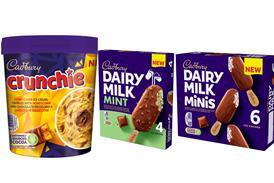
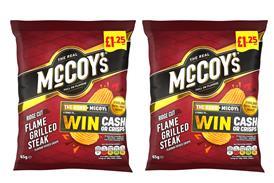
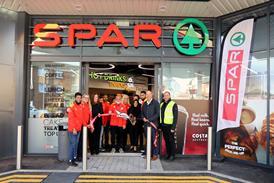
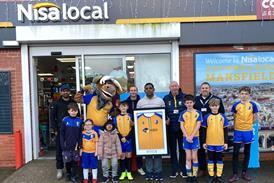








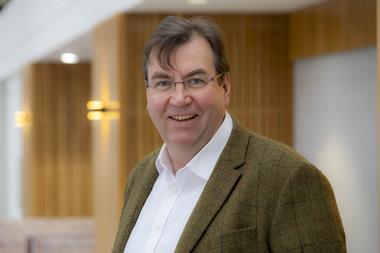
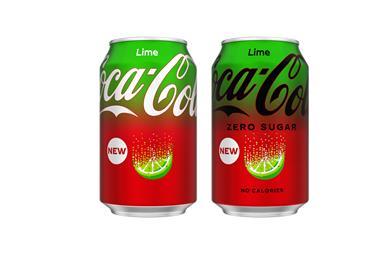
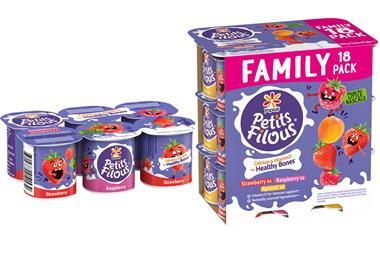



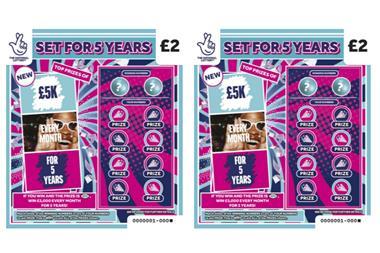
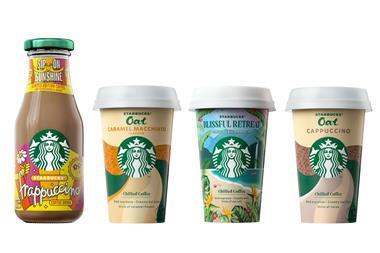
No comments yet